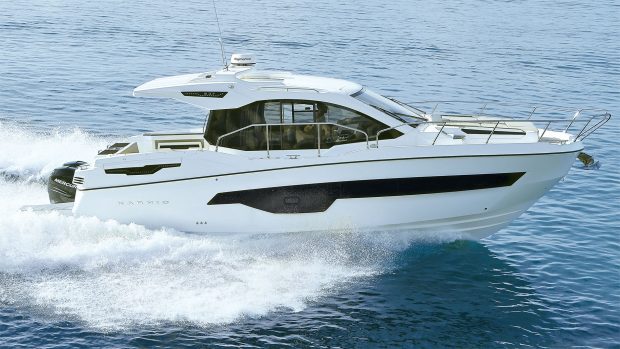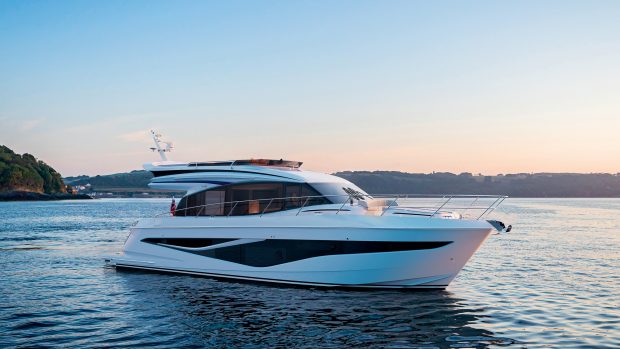Dates of public meeting on the matter too
The Crouch Harbour Authority (CHA) says it is working hard to ensure disruption for river users during the creation of the proposed Wallasea Island Wild Coast Project is kept to a minimum.
The authority is working with the Royal Society for the Protection of Birds (RSPB) and Crossrail to prevent a potential major increase in tidal flow in the popular river and estuary.
CHA’s other prime concern is to ensure the habitat creation will not cause significant long-term hydrodynamic effects on the river.
Plans for the proposed RSPB owned and managed 750-hectare Wallasea conservation area are well underway and when the project is complete in 2019 it will be the largest of its type in Europe. The idea of the new Wild Coast project – covering three quarters of the island – is two-fold, to create a valuable, salt mash, wildlife habitat by artificially raising the level of the island using recovered tunnelled material from London’s Crossrail Project, and to control and reduce the volume of water flowing through the estuary.
Without strategic measures in place, Wallasea Island, located opposite Burnham-on-Crouch on the south side of the River Crouch, is at risk of unmanaged flooding due to the poor condition of the surrounding coastal defences. A result of the sea walls breaching would be an extra 11 million cubic metres of water flowing on and off the island each tide. That volume of additional tidal water exchange in the Roach and Crouch would generate increased tidal streams and affect tidal patterns of shoaling or siltation in an unpredictable way.
Commenting on the effects flooding would cause, the RSPB says: “The uncontrolled flooding of the island would have a devastating effect . What we’re proposing to do will improve the flood defences by creating a network of mudflats, salt mashes and channels. These channels dissipate the energy of the incoming tide and act as a natural sea defence. In addition to this, along the western side of the island, the land level will very gently rise up to create a natural division between the wet and dry part of the island which will, of course, reduce the likelihood of any flood event to the built-up area.”
Although the CHA is, in principle, supportive of the Wallasea Island Wild Coast Project and accepts the scheme represents a pragmatic solution to the problem of decay of existing flood defences around Wallasea Island, it is keen to ensure the correct safeguards are in place should future negative hydrodynamic effects occur.
During their research the RSPB commissioned ABP Marine Environmental Research Ltd (ABPmer) to conduct an Environmental Impact Assessment to find out what hydrodynamic effects the intertidal habitat would have on the river. . The RSPB is confident that the material transported onto the site will stay put. They believe the area will actually accrete more silt rather than discharging material into the river. That has been the experience at the adjacent DEFRA wetland site on the north shore of the island.
However, as a precaution the CHA is seeking an indemnity agreement from the RSPB. Mark. Wakelin, CHA’s Harbour Master said: “Although we are quite confident that model studies are correct and there won’t be any unforeseen consequences, we need a condition put in place to protect the interests of river users in the future.”
Before any work on the scheme begins the CHA has to grant a Works Licence for the construction of the unloading facility, and for the work to breach the sea walls. Although it is probable that the works licence will be granted it will have conditions attached to protect the navigation and the interests of other river users.
The unloading facility, big enough to take two ships will be constructed at Ringwood Point near Fairway No. 1 buoy which means shipping movements will take place in the area. In particular ships will have to swing in the waters between Horse Shoal and the beginning of the moorings. Although this is clearly going to affect river users, Wakelin says the CHA are working closely with Crossrail to ensure strict safety measures are in place. “With every ship movement there’ll be dedicated staff at the jetty to direct movements of vessels and to ensure we don’t have dangerous conflicts between the ships and yachts racing, and of course conflicts with ships heading to Baltic Wharf further upstream. During racing and at other busy times ships will be escorted by the Hartbour Launch. In addition to this there will be a tug standing by and, during club racing including Burnham Week, safety procedures will be in place to ensure we don’t have ships turning up and swinging in the middle of race starts or junior fleet racing.”
Subject to the licence being granted, work to construct the pontoon is likely to begin early 2010 and ships transporting material from the east side of the Crossrail route on the Isle of Dogs will start to arrive during the summer of 2010.
John Archer, Chairman of the harbour authority concluded: “It’s exciting to be part of the biggest habitation creation scheme of its kind in Europe. We believe also that the finished project will be a big asset for our river – a wild and beautiful place for our boaters to enjoy. It’s also very encouraging to see the commitment by Crossrail to use sea transport, which is environmentally friendly and is what we, the harbour authority, are keen to promote. We are also working hard to ensure that in future there will be easy public access to the site from the north side of the river. Our prime consideration however, is that the process is safe and to ensure river users are inconvenienced to the minimum extent.”
A public meeting to update on the progress of the proposed Wallasea Wild Coast Project will be held at 1930 at the Royal Corinthian Yacht Club, Burnham-on-Crouch, Essex on Friday 17 April 2009. Representatives from the Crouch Harbour Authority, RSPB and Crossrail will be present.








